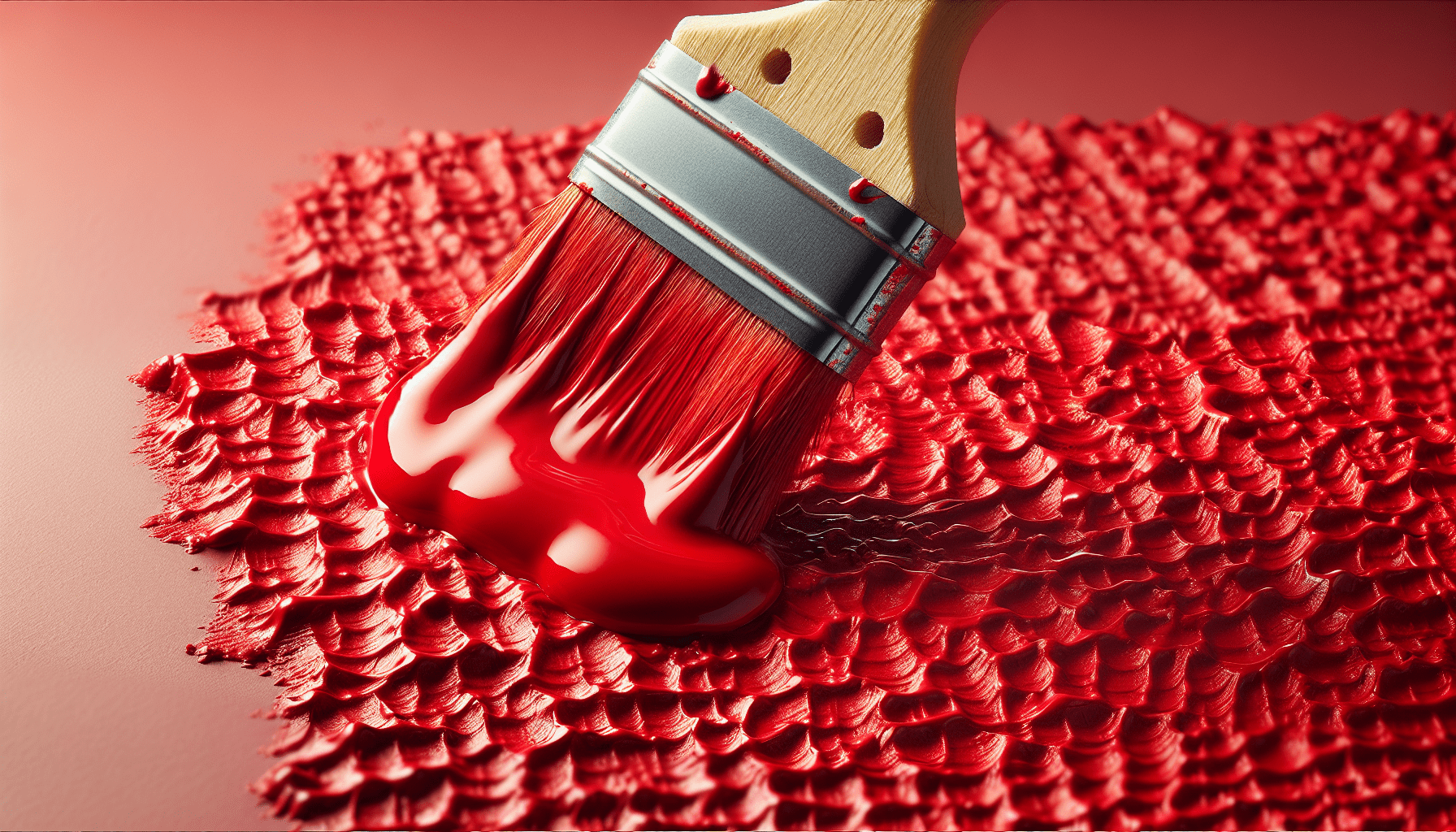Is it possible to paint over intumescent paint? The query is particularly pertinent for professionals in construction, property maintenance, or renovation sectors who may encounter this specialized paint. Intumescent paint, recognized for its fire-retardant properties, raises concerns about maintaining its efficacy when additional layers are applied.

Understanding Intumescent Paint
Intumescent paint plays a crucial role in fire safety. It’s a passive fire protection measure designed to swell when exposed to high temperatures, forming an insulating char layer that slows the transfer of heat to the substrate, thereby delaying structural failure. This explains its wide application in safeguarding steel structures in buildings and infrastructure projects.
How Intumescent Paint Works
When subject to high temperatures, intumescent paint undergoes a chemical reaction. This reaction causes the paint to expand and creates a thick, insulating barrier. The mechanism allows steel structures to withstand high temperatures for extended periods, potentially saving lives and reducing structural damage during a fire.
Types of Intumescent Paint
There are two primary types of intumescent paint: water-based and solvent-based. Each type has distinct characteristics and is suited for specific environments. Water-based intumescent paint is typically used for interior applications due to its minimal odor and ease of clean-up, whereas solvent-based options are more durable and suitable for exterior use.
| Type | Primary Use | Characteristics |
|---|---|---|
| Water-based | Interior | Minimal odor, easy clean-up |
| Solvent-based | Exterior | More durable, weather-resistant |
The Need for Painting Over Intumescent Paint
Various scenarios might necessitate painting over intumescent paint, such as aesthetic improvements, surface protection, or repairs. Painting over to match decor, rebrand, or conceal existing fire-protective coatings is a common need.
Aesthetic Considerations
Buildings often require uniformity in color schemes for visual appeal. Standard intumescent paint typically has a bland finish that may not align with desired aesthetic outcomes. By painting over it, you can achieve a more visually pleasing appearance while retaining fire protection.
Protection and Longevity
Painting over intumescent paint might also be intended to provide additional protection from physical wear and environmental factors. The outer layer helps maintain the integrity of the base intumescent coating, extending its functional lifespan.
Can You Paint Over Intumescent Paint?
Yes, you can paint over intumescent paint, but there are critical guidelines and considerations to ensure efficacy and durability. It is essential to follow recommended practices, use appropriate materials, and be aware of potential pitfalls.
Types of Topcoats Suitable for Intumescent Paint
Not all paints are appropriate for use over intumescent coatings. Select topcoats that are compatible and designed to work with fire-retardant products. The three main types of topcoats suitable are:
- Acrylic Topcoats
- Alkyd Topcoats
- Epoxy Topcoats
Each has distinct properties and recommended applications.
| Type | Properties | Recommended for |
|---|---|---|
| Acrylic | Water-based, fast drying, UV resistant | Interior surfaces |
| Alkyd | Oil-based, durable | General purpose applications |
| Epoxy | Highly durable, chemical resistant | Industrial or heavy-duty areas |
Critical Considerations Before Painting
Surface Preparation
Effective surface preparation is imperative for achieving optimal adhesion and a uniform finish. Ensure the intumescent paint is cured, clean, and free from debris, oils, and other contaminants.
Compatibility Testing
Perform a small-scale compatibility test before full application. This ensures the chosen topcoat will not react adversely with the intumescent paint and compromise its fire-protective properties.
Application Techniques
Using appropriate techniques during application is essential. Below are some recommended steps:
- Ensure Proper Curing: Before applying any topcoat, allow the intumescent paint to fully cure as recommended by the manufacturer, usually 24-48 hours.
- Clean the Surface: Wipe down the surface to remove any dust or dirt. A gentle solvent or degreaser can be used for this purpose.
- Priming: Depending on the topcoat and condition of the intumescent paint, a primer might be necessary to enhance adhesion.
- Even Coating: Apply the topcoat evenly using a brush, roller, or spray gun. Follow manufacturer recommendations for drying times and number of coats.
Potential Risks and How to Mitigate Them
Various risks and challenges need to be navigated carefully to maintain the fire-retardant efficacy of the intumescent paint while achieving a satisfactory finish.
Risk of Compromised Fire-Retardant Properties
The principal risk when painting over intumescent coatings is compromising their fire-retardant properties. Selecting incompatible topcoats or poor preparation can jeopardize the paint’s ability to protect during a fire.
Mitigation Strategy
- Use Manufacturer-Approved Topcoats: Always reference the intumescent paint manufacturer’s guidelines for approved topcoat products.
- Apply Thin Coats: Avoid overly thick topcoat applications which can hinder the expansion properties of the intumescent paint during a fire.
Adherence Issues
Another common issue is inadequate adhesion of the topcoat, leading to peeling or flaking, thereby exposing the intumescent paint to wear and reducing overall protection.
Mitigation Strategy
- Proper Preparation: Consistently ensure surfaces are correctly prepared.
- Environmental Controls: Maintain appropriate temperature and humidity during application and curing phases.

Regulatory Standards and Certifications
Compliance with regulatory standards is critical in commercial and industrial applications where intumescent paints are most commonly used. Non-compliance can lead to severe legal and safety implications.
Building Regulations
Ensure your project complies with local and international building regulations that mandate the use of intumescent paints. These regulations often stipulate specific guidelines for application and permissible topcoats.
Certifications
Utilize materials and products that have relevant certifications and meet industry standards, such as those by Underwriters Laboratories (UL) or the British Standards Institution (BSI).
Maintenance and Inspections
Regular maintenance and inspections are necessary to ensure ongoing effectiveness of the fire retardant properties, even after painting over the intumescent paint.
Routine Inspections
Conduct regular inspections to check for any signs of wear, damage, or delamination. Immediate repairs should be conducted when such issues are identified.
Reapplication
Based on wear and environmental exposure, it may be necessary to reapply both the intumescent and topcoat layers. Follow specific guidelines on frequency and procedures for reapplications.
Conclusion
Painting over intumescent paint is a feasible endeavor, provided you adhere to best practices and take necessary precautions. The key to success lies in selecting the right topcoat, preparing the surface meticulously, and adhering to application guidelines. By doing so, you can ensure the structural integrity and aesthetic quality of your projects without compromising fire safety.
Put your due diligence into confirming compliance with regulatory standards and conducting routine maintenance checks. This approach will extend the life of your coatings, maintain safety standards, and ultimately prevent catastrophic structural failures in case of fire.



